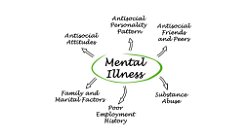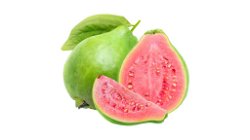Achieving Global Food and Nutrition Security: Challenges and Solutions
Adina Anderson
. 3 min read
It is anticipated that there will be an 88 percent increase in the consumption of ruminant meat (which includes beef, lamb, and goat) between the years 2010 and 2050. Producing beef, which is the ruminant meat that is consumed the most frequently, is extremely resource-intensive. Producing one gram of edible protein from beef requires twenty times the amount of land and emits twenty times the amount of greenhouse gases that producing one gram of edible protein from common plant foods like beans, peas, and lentils does. With the help of these apps, individuals can play an active role in mitigating the environmental impact associated with ruminant meat consumption, making small yet impactful changes towards a more sustainable future.

Food Security is Inextricably Linked to Water Security
The world is rapidly running out of clean, fresh water, which threatens its ability to feed and nourish a population that is expanding at an alarming rate, promote sustainable development, and protect the wellbeing of our planet. The way that water is managed right now does not produce enough of it to adequately support the world's population and put an end to hunger and malnutrition. Therefore, improved water management is absolutely necessary for the food and nutrition security of the entire world.
Enhancing the Relative Food Security of the Area
It is the responsibility of every government to work toward eliminating hunger among its citizens. Policies can be enacted by national governments that encourage the use of land for family farms, protect against the pollution of farmlands, make it possible for farmers to obtain credit at affordable rates, and assist farmers in finding solutions to problems. As a means of bolstering the nation's overall supply of food, certain national governments provide financial assistance in the form of subsidies to either farmers, food buyers, or both.
Guidelines for a Healthy Diet for Americans
The Dietary Guidelines for Americans, also known simply as the Dietary Guidelines, are a set of recommendations that were developed to assist Americans in satisfying their nutrient requirements, enhancing their health, and warding off disease. It is designed and written for a professional audience, which includes policymakers, healthcare providers, nutrition educators, and operators of federal nutrition program operators.
Going Back to the Roots: A Guide to the Food Groups on MyPlate
Fruits, vegetables, grains, foods high in protein, and dairy products make up the five food groups, as represented by the MyPlate icon. The Dietary Guidelines for Americans 2015-2020 emphasizes the importance of an overall healthy eating pattern that includes all five groups as key building blocks in addition to oils. These guidelines will be in effect from 2015-2020. Each food group contains a variety of foods that are comparable to one another in terms of their nutritional composition.
The Harmful Effects of Junk Food on One's Body
The world is currently dealing with an obesity epidemic, which puts people at risk for chronic diseases such as heart disease and diabetes. Obesity can be defined as a disorder in which having too much body fat increases the risk of having health problems. Despite the fact that eating junk food can be one factor in the development of obesity, we continue to make it a regular part of our diets because of the hectic nature of our lives. When you have to balance things like school, a sport, and spending time with friends and family, life can get pretty hectic.
It is entirely possible to eliminate hunger and food insecurity
This country is aware of how to address the issues of hunger and lack of access to sufficient food supplies. There are a plethora of programs and services that support mothers and babies, children of school age, older adults, low-income workers, and other demographics in an effort to combat hunger and food insecurity from a variety of perspectives. These programs are intended to lessen the severity of hunger by providing supplemental income to individuals and families who are living below the poverty line.
Conclusion
In conclusion, the consumption of ruminant meat such as beef, lamb, and goat is expected to increase dramatically by 2050, and producing beef is a resource-intensive process that emits a significant amount of greenhouse gases. Water management is crucial for global food and nutrition security, and national governments can enact policies to support family farms, protect farmland, and provide financial assistance to farmers and food buyers. However, it is entirely possible to eliminate hunger and food insecurity through programs and services that support vulnerable populations.
More Stories from
The Role of an Orthopedic Surgeon in Modern Medicine
This article provides an insightful overview of orthopedic surgeons and their significant contributions to modern medicine.
Managing Mental Illness: Tips and Treatments for Depression, Anxiety, and Panic Disorder
This article discusses the significance of mental health and common mental illnesses such as depression, generalized anxiety disorder, and panic disorder.
Advancements in Medical Technology: Improving Healthcare Access
Embrace the future of healthcare with these advancements, fostering a more inclusive and accessible healthcare system for all.
Cognitive Enhancers: The Ethics and Implications of Brain-Boosting Drugs
Explore the ethics and implications of cognitive enhancers, also known as "smart drugs," that promise improved cognitive abilities.
The Versatile Guava: A Fruit with a Multitude of Uses
From its delightful taste in culinary creations to its potent health benefits and skincare properties, guava has become a beloved fruit worldwide.










.png?width=40&aspect_ratio=1:1)

